Last Chance to Catch NYC's Holiday Notalgia Train
We met the voices of the NYC subway on our nostalgia ride this weekend!


In Elmhurst, Queens, a nondescript construction site adjacent to a parking lot has become the location of a contentious preservation battle. In 2011, a young woman was discovered in a 100-year-old iron coffin by construction workers. Research revealed her identity and the existence of many unmarked graves of citizens of Newtown, a community of freed African Americans established in 1828. The site was affiliated with the St. Mark African Methodist Episcopal Church, which did not relocate most of its internments when it moved to the Jackson Heights/North Corona border in 1920. Just recently, the Preservation League of New York State named the Elmhurst African American Burial Ground one of the “Seven to Save,” its annual list of threatened historic sites in New York State.
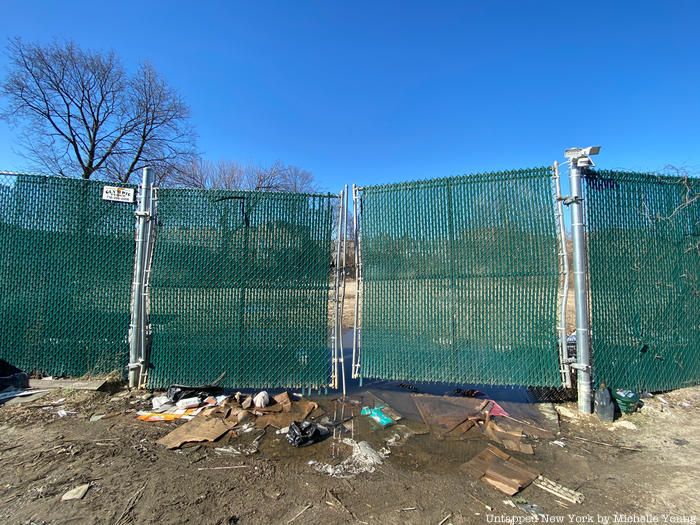
Fence in front of development site that was once the cemetery of St. Mark African Methodist Episcopal Church
In 2018, we shared an exclusive clip from the PBS documentary series Secrets of the Dead from the episode The Woman in the Iron Coffin. The documentary highlighted the efforts of a forensic archeologist Scott Warnasch, who has been the forensic anthropologist/archaeologist for the New York City Office of Chief Medical Examiner from 2005 to 2015. Warnesh worked with members of the local community in New York, leading scientific experts, and technological experts, to provide both a backstory to the woman’s life and provide a physical and sociological picture of who she was. “It’s really important that we create this rich and diverse tapestry of African American life in the 19th century,” says one of the interviewees.
Despite the awareness raised so far about the Elmhurst African American Burial Ground, the Preservation League of New York State writes that development continues to “threaten to erase this history all together.” Last week, we took a visit to the site, which is located along the Long Island Railroad Port Washington Line that goes to Mets-Willets Point and beyond. It’s surrounded by residential row houses and a mixed-commercial and residential building that faces Corona Avenue.
Permits had been filed in 2018 for a five-story residential building containing 80 apartments and a museum, but in 2019 the lot was back up for sale for almost $13.8 million, represented by Cushman & Wakefield Properties. It does not appear to have changed owners (in New York City government documents, it’s still owned by 90 Queens Inc., run by Chinese developer Bo Jin Zhu and all the real estate listings have disappeared).
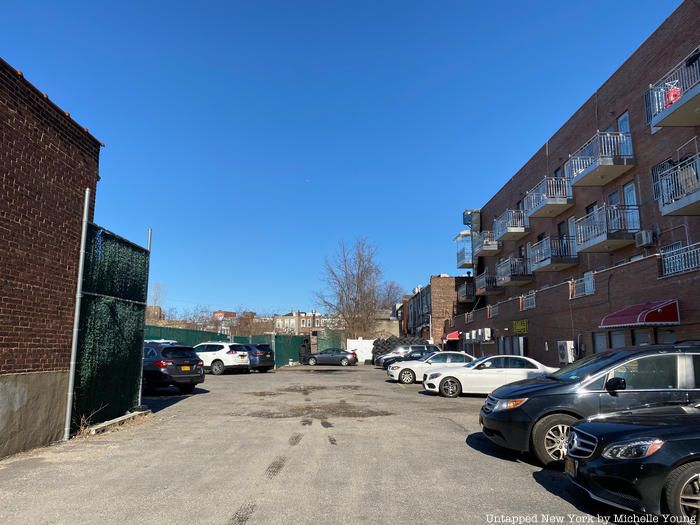
To get to the construction lot, you can enter the address 47-11 90th Street and turn into the parking lot that backs the building along Corona Avenue. In the lot, you’ll find the back exit of a tire shop. The construction lot, which is the site of the Elmhurst African American Burial Ground, is fenced off but you can easily see inside. Water is pooling in the dirt lot with garbage collecting throughout the site. A Ford passenger van sits, seemingly abandoned, just to the left of the entrance.
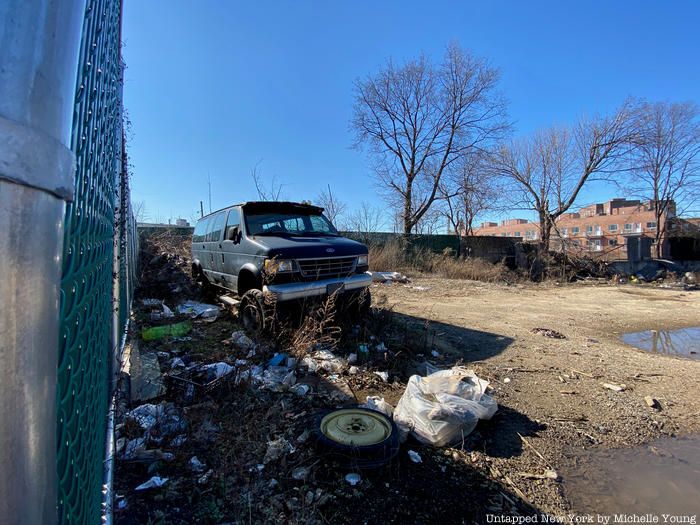
Marialena Giampino, President, Elmhurst History and Cemeteries Preservation Society says in a statement, “This designation by the Preservation League of NYS is truly an inspiration for us to continue our work in getting the proper recognition and long overdue preservation of the African American burial ground in Elmhurst, Queens. For Elmhurst (formally Newtown) to have this tangible site that is in one of the first freed African American communities in New York State, we must strive for affirmation and preservation of this sacred burial ground. The Elmhurst African American burial ground has a deep purpose to tell the narrative of the African American community in Newtown and the greater New York State.”
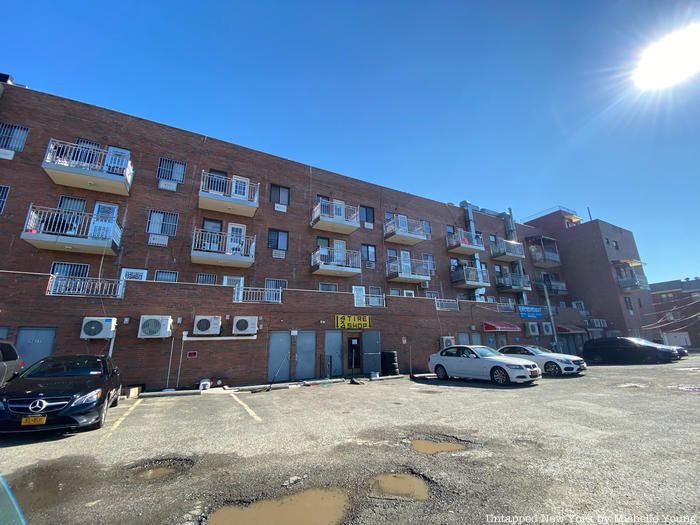
The back of the building at 90-15 Corona Avenue, where the church was once located
In 2005, when the existing buildings on the site were being prepared for demolition, the Landmarks Preservation Commission declared the 1.4 acre property an archeological site. As such, any new development on the site would require an excavation and the St. Mark African Methodist Episcopal Church would be responsible for the burials. In the archeological assessment done prior to the demolition, it was determined that the former church and dwelling that were connected to the St. Mark African Methodist Episcopal Church would have been located within the footprint of the building at 90-15 Corona Avenue and that the construction of that building would have destroyed much of what could be excavated. But the burial ground would have been in the “northern, eastern, and central portions of the project area.” The report contended that “no indications were found by the research conducted for this study that other burials were removed from the cemetery when the property no longer served as church property.”
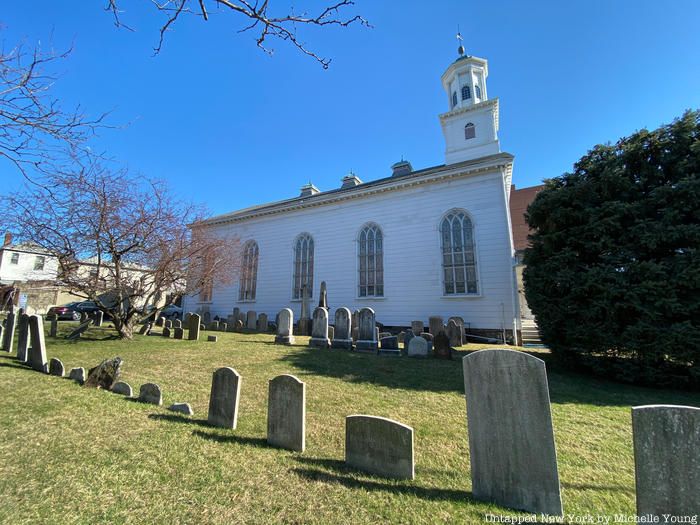
Reformed Church of Newtown and cemetery. The church offers services in Taiwanese, Mandarin, English and Tamil.
It’s not surprising that there is a burial ground here, given the history of the African American community in Newtown, and the proximity to other cemeteries that are just nearby. The Reformed Church of Newtown and St. James Episcopal Church, both whose original structures date to 1735, are just a few blocks away. With wooden churches still standing, a visit to this area still offers an unexpected taste of what the architecture of early Queens would have been like. Excavation and preservation of the Elmhurst African American burial ground would add to a more complete picture of the religious life in this diverse community in the 18th, 19th and early 20th centuries.
Subscribe to our newsletter